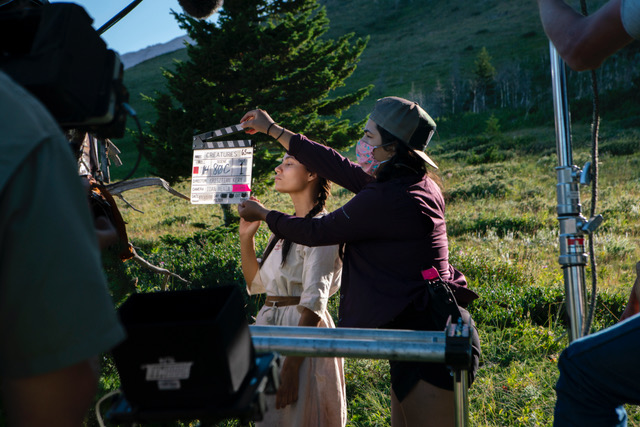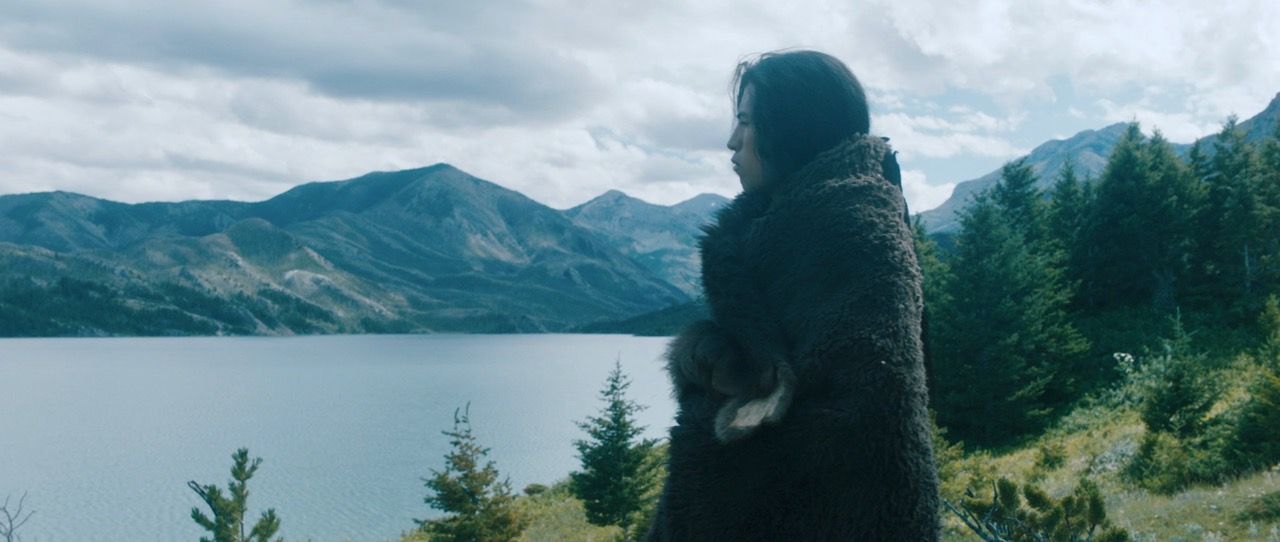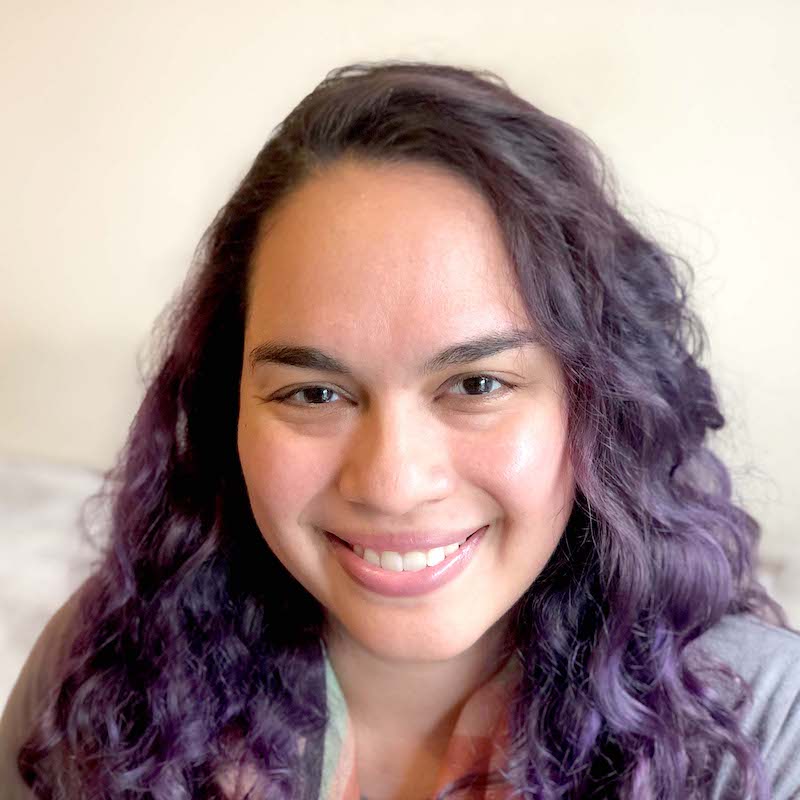
- Details
- By Monica Whitepigeon
BROWNING, Mont. — With most of Hollywood shut down for in-person filming, independent filmmakers are taking the helm to show what is possible during a global pandemic.
After years of planning, the ambitious crew and cast behind the upcoming film “Sooyii” decided to proceed with production in rural Montana. Working closely with the Blackfeet Nation, the historical-based movie focuses on the introduction of horses to the tribe and its correlation to the devastating effects of the smallpox epidemic in the 1700s.
Imported from Spain, horses, also known also as “elk dogs,” were introduced to the tribe who used them for hauling belongings and hunting buffalo, as well as to their advantage on the battlefield. Today, many Blackfeet continue their traditions and have strong relationships with horses.
Formerly titled “Creatures,” Sooyii, which roughly translates to “an unknown being” from Piikani (the Blackfeet language), features an all-Native cast speaking entirely in the Blackfeet language with English subtitles.
 “Sooyii” production scene with actor Stormee Kipp. Courtesy Krisztian Kery.“This is decolonization at its finest,” remarked 20-year-old lead actor Stormee Kipp (Blackfeet, Shoshone).
“Sooyii” production scene with actor Stormee Kipp. Courtesy Krisztian Kery.“This is decolonization at its finest,” remarked 20-year-old lead actor Stormee Kipp (Blackfeet, Shoshone).
The former Haskell student and now University of Montana athlete grew up immersed in Blackfeet culture and, while not a fluent speaker, has a deep understanding of the language. He hopes the film will serve as a form of cultural revitalization and inspiration for Native kids to see actors and actresses who look like them on screen.
“Move over ‘Twilight,’ I’m the real deal,” Kipp said, praising the production team’s dedication to accuracy and attention to detail.
In his debut acting role, Kipp depicts a lone Blackfoot man trying to navigate his interactions with warring tribes amid the smallpox outbreak, which killed an estimated two-thirds of the Blackfeet tribe.
“I got to portray a Piikani warrior, words can’t describe what I feel about this film and being able to be a part of it,” Kipp said.
The irony of filming a pandemic-themed story during the Covid-19 pandemic was not lost on all those involved in the production. Everyone’s health and well-being took priority and required daily precautions.
“It was a challenge to figure out how to go forward with this,” said Hungarian director Krisztian Kery.
The vast open spaces on and near tribal lands allowed the cast and crew to socially distance and maintain safety standards while keeping in touch with tribal officials, but they were also met with other challenges.
“This is bear country,” said producer and wrangler Pat “Judge” Hall (Blackfeet), who took on multiple roles, including impromptu bear shooter.
In August, Hall opened his over 4,000-acre ranch as a shooting location for the film and it even appears in a flashback sequence. He also provided numerous resources, such as horses, and helped build pieces for the set design. As part of the story, Hall built a traditional hut for the two leads, Kipp and Cheyenne Gordon (Shoshone), days before shooting. Kery and the camera crew returned quickly to base camp and Hall after discovering a bear moved into the hut.
“Maybe he figured we built him a house,” joked Hall, who managed to get the bear out with minimal damage to the set.
To promote authenticity, Kery and Hall worked with other film producers to recruit as many Blackfeet tribal members and Elders as possible for various acting roles, including Hall’s daughter and three-year-old grandson, serving as cultural and language consultants and learning the myriad of crew responsibilities.
“If (filmmakers) go to reservations, they should hire a crew from there and teach them about the crafts,” said Kery.
Sooyii is the first full-length directing feature for the stuntman turned director, who learned much of his craft through observation and experience. In his 20-plus-year career, Kery met and befriended various Blackfeet stuntmen and wranglers, including Hall, while filming Western movies.
 Still shot from the film “Sooyii.” Courtesy Krisztian Kery.
Still shot from the film “Sooyii.” Courtesy Krisztian Kery.
After learning more about the tribe’s history and the significance of horses, Kery wanted to work with the tribe to tell a story from their perspective and “use the original language.” He said that the two years he spent researching the project was still not enough to accurately convey Blackfeet culture, but he is grateful for the relationships he made with the consultants.
The film pays homage to the animals that helped strengthen the tribe’s territory and to Blackfeet ancestors who lost their lives. One featured scene includes the approximate location where an entire village was wiped out.
Hall hopes the film will encourage other tribes to share their stories and culture for future generations.
“How do you collectively manage a mysterious and deadly pathogen that rapidly spreads from person to person? The Blackfeet Nation has kept these stories alive for generations and now we are sharing them with the rest of the world. If there is one lesson that our past holds for this future generation, it’s that fear is the deadliest weapon of all. Conquer that, and logic will save you,” Hall said.
“I feel like this story had to be told,” he added, “Blackfeet are so resilient. We can survive anything.”
More Stories Like This
Zuni Youth Enrichment Project Takes Top Emerging Artist Apprentices to Phoenix for Artistic Exploration and Cultural ImmersionFrom Dishwasher to Award-Winning Chef: Laguna Pueblo's Josh Aragon Serves Up Albuquerque's Best Green Chile Stew
Rob Reiner's Final Work as Producer Appears to Address MMIP Crisis
Vision Maker Media Honors MacDonald Siblings With 2025 Frank Blythe Award
First Tribally Owned Gallery in Tulsa Debuts ‘Mvskokvlke: Road of Strength’
Help us defend tribal sovereignty.
At Native News Online, our mission is rooted in telling the stories that strengthen sovereignty and uplift Indigenous voices — not just at year’s end, but every single day.
Because of your generosity last year, we were able to keep our reporters on the ground in tribal communities, at national gatherings and in the halls of Congress — covering the issues that matter most to Indian Country: sovereignty, culture, education, health and economic opportunity.
That support sustained us through a tough year in 2025. Now, as we look to the year ahead, we need your help right now to ensure warrior journalism remains strong — reporting that defends tribal sovereignty, amplifies Native truth, and holds power accountable.
 The stakes couldn't be higher. Your support keeps Native voices heard, Native stories told and Native sovereignty defended.
The stakes couldn't be higher. Your support keeps Native voices heard, Native stories told and Native sovereignty defended.
Stand with Warrior Journalism today.
Levi Rickert (Potawatomi), Editor & Publisher

